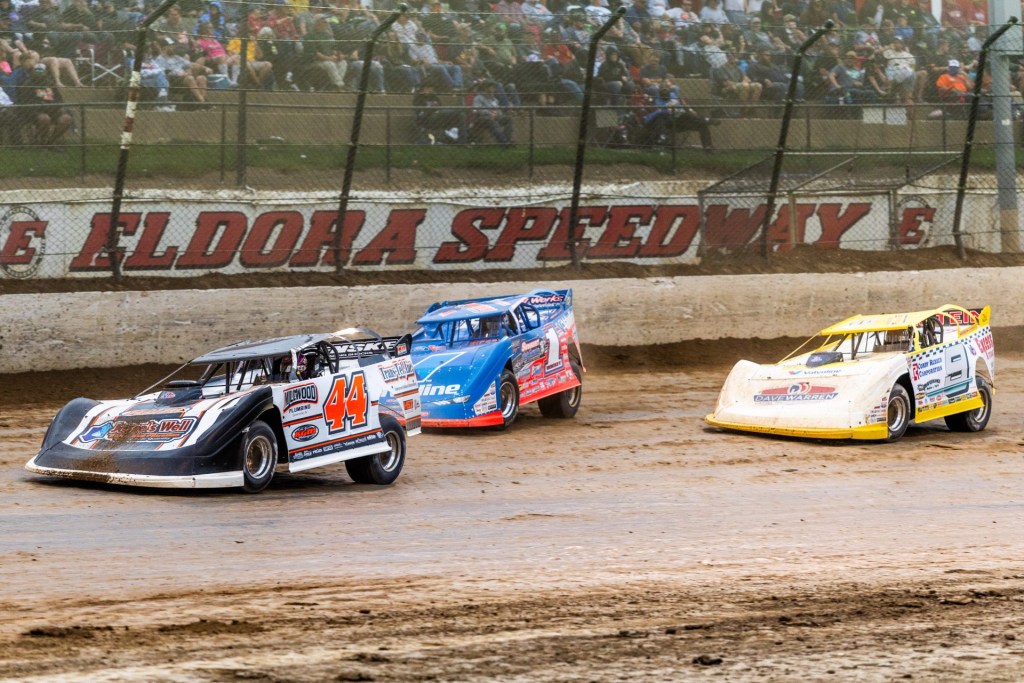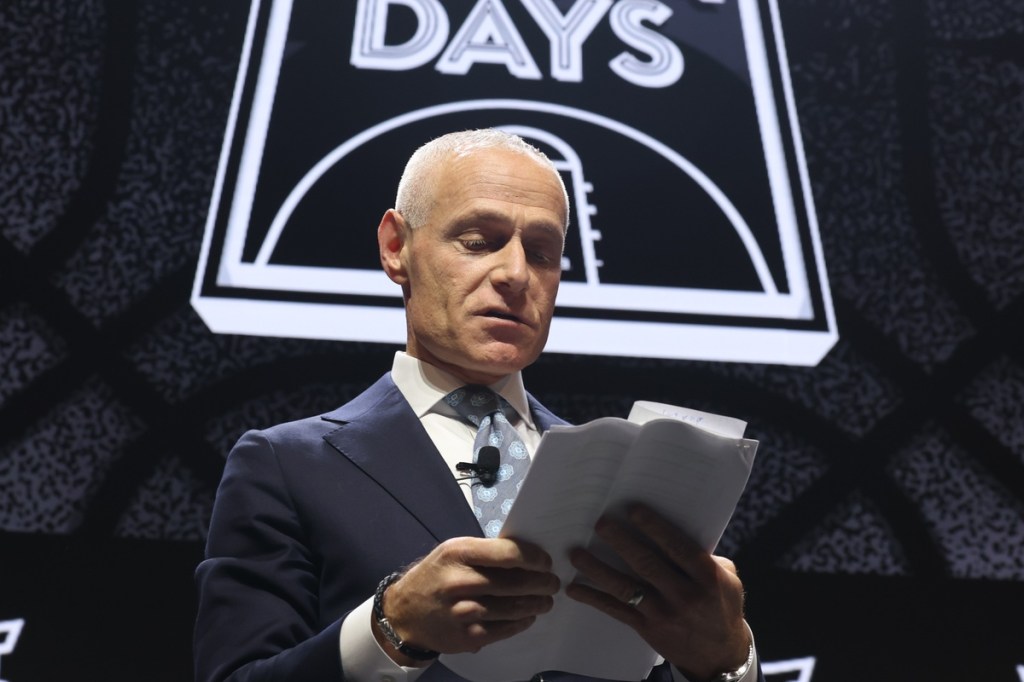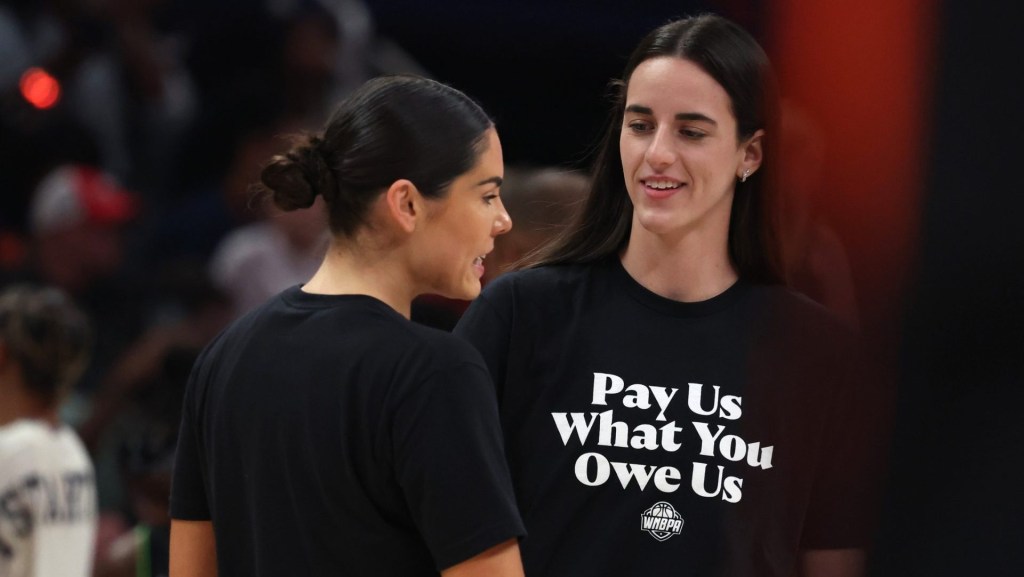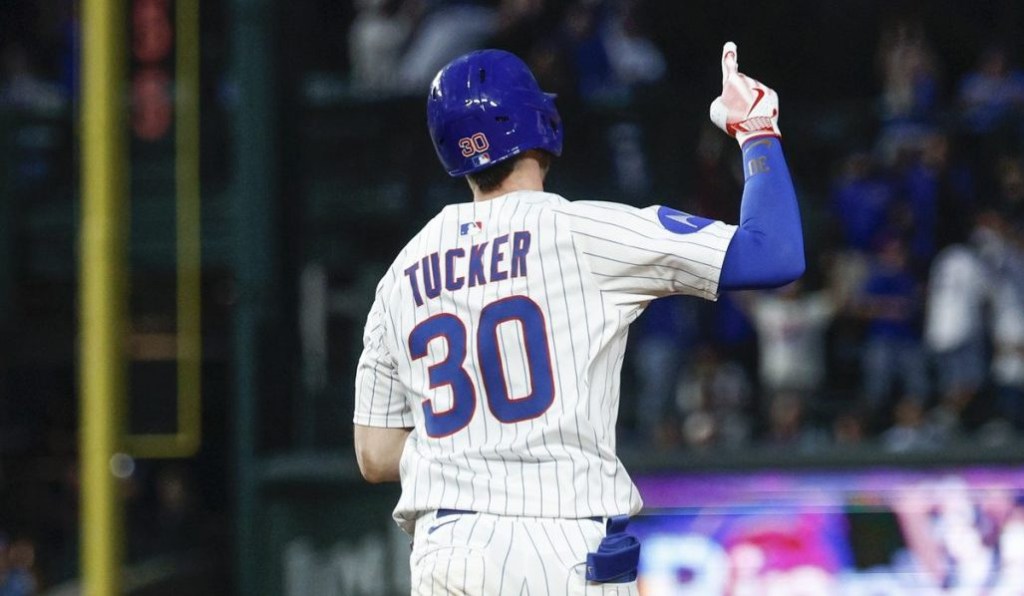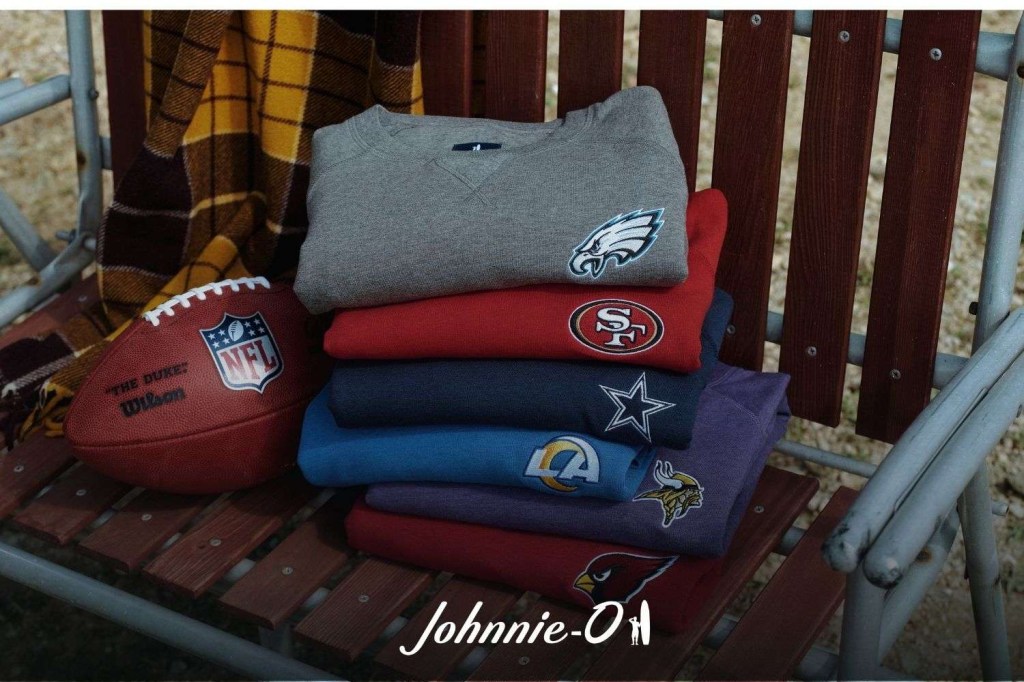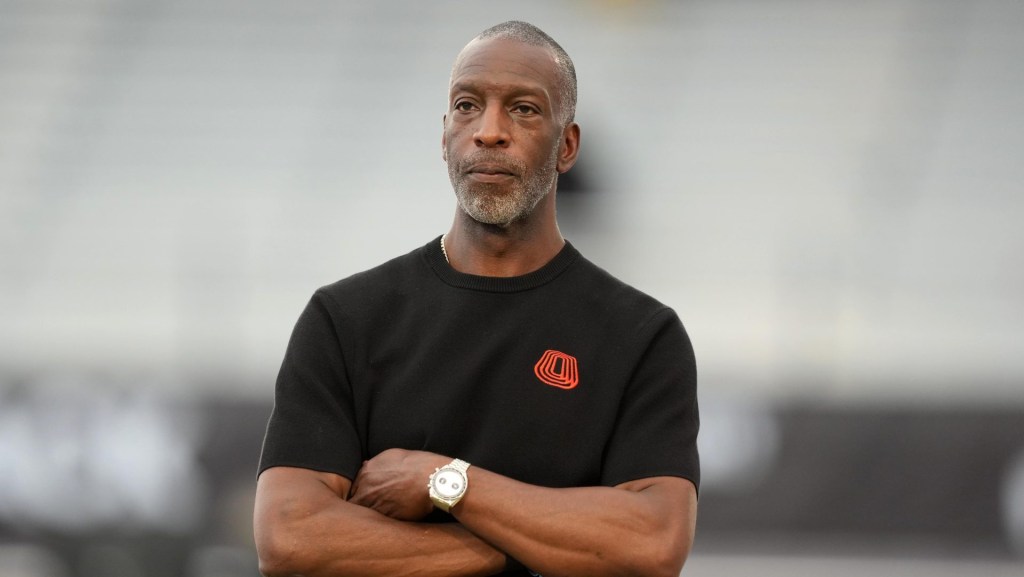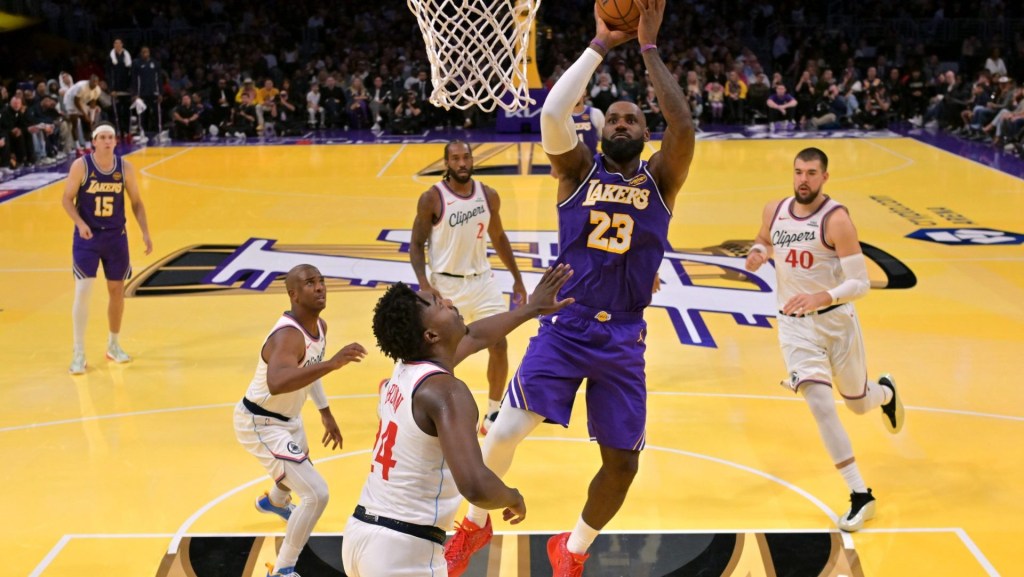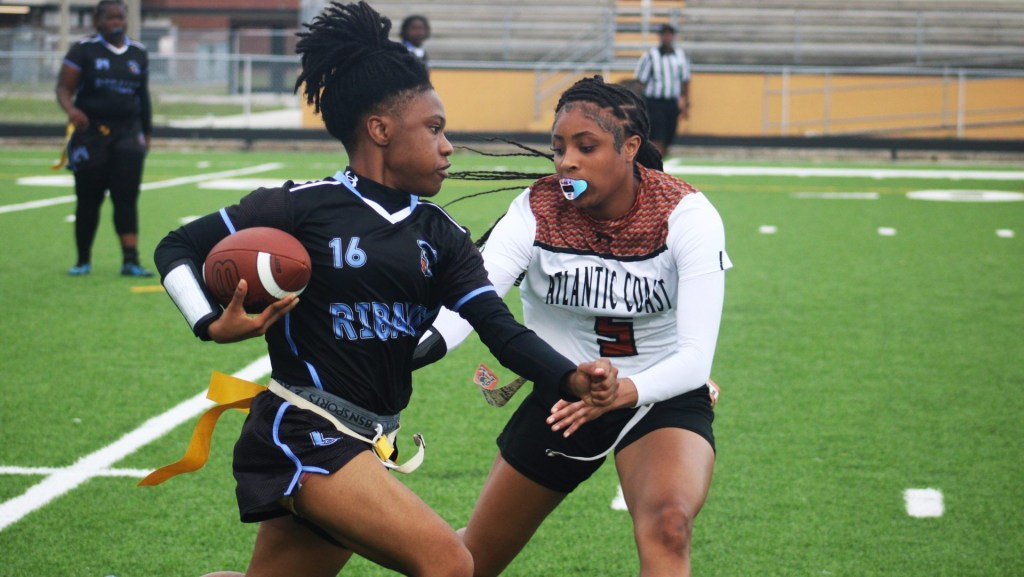Following a 5–0 victory over the Rangers last December, the official Devils account posted a GIF on X of a flaming dumpster floating down a flooded street. New York’s logo was slapped on the trash bin with a caption, “Safe travels across the Hudson.”
The lippy pot-stirring has since racked up more than 2 million views and 14,000 likes, with even fans of the Rangers—who suffered a particularly brutal season—saluting the meme in the replies.
Social media trolling—“shitposting,” in popular parlance—has come to define the tone of the modern internet. It is, simply, dumb fun: irreverent in-jokes for the chronically online, often going over the heads of fans who don’t spend a borderline-toxic amount of time on X or TikTok.
Some form of shitposting has been around as long as the internet itself, but the voice has increasingly chipped away at the previously straight-laced persona of brands—even politicians—and recently has also redefined the online identity of many corners of the sports world.
It’s a marked shift from a world in which sports franchises and leagues have fiercely protected—and often sanitized—their brand reputations. It’s not that PR and image isn’t still everything—it’s that relevancy for so many teams now means commanding respect through an insolent, self-deprecating voice.
“we can confirm the game won’t finish with a 0-0 score,” the Golden Knights posted on X after a season-ending playoff overtime loss to the Oilers in May. Behind the account is 30-year-old Gordon Weigers, director of digital content strategy. At 12:43 a.m. ET, he followed with a sole broken-heart emoji; at 2:21 p.m. the next day, he posted the oft-used photo of a seemingly exasperated Ben Affleck smoking a cigarette, without a caption.
These types of posts may seem off the cuff—and, fair, some are—but franchises and leagues have made sure the trolling is strategic.
“We had the chip on our shoulder of everyone saying that hockey would never work in the desert,” Weigers tells Front Office Sports. On social media, that meant talking “in a way that fans talk to each other about hockey,” he says, instead of a squeaky-clean presence that felt like “a press release that goes out every time a goal gets scored.”
A decade ago, the average age for a social media manager was much younger, says Brian Born, director of digital content headed into his eighth season with the Flyers. The team is behind the viral AP Brainrot Exam video, trolling its own players with a quiz on Gen Z slang—a test several players failed. “Even if you dislike it,” Born tells FOS, “someone else out there loves it.”
He says social media positions were usually entry-level—or lower. When he started his sports career as a marketing intern for the Devils in 2012, he worked in a team of mostly other interns. Born, now 34, estimates the average age of a sports social team is between 25 and 40, with each member touting years of experience.
Pro teams started taking more swings on social media around 2017 with the rise of TikTok, hoping to ingratiate themselves with a new generation of fans. Both social media managers point to the Los Angeles Kings as pioneers of “taking more calculated risks,” as Born puts it.
He also counts the Colorado Rockies as early shitposters, who went on a spectacular social media run last year with their record-loss season, mostly trolling themselves; Weigers points to the Atlanta Hawks and the Columbus Blue Jackets as well. He calls out a 2023 Buffalo Bills TikTok as one of the best ever, calling it “brainrot,” the highest compliment for a shitposter.
Chirping is core to sports such as hockey—yet the buttoned-up world of golf also has an unlikely foothold in the shitposting universe.
The PGA Tour employs a 14-person social operation, which manages around 35 different accounts across several platforms for their various leagues, says Laura Neal, EVP of brand communications. The accounts have jumped on deeply niche trends. Some of the PGA Tour posts are even trolling themselves: The caption to a Scottie Scheffler shitpost video states it is an attempt “to connect with our Gen Z audience.”
The permission and freedom to shitpost is key to the success of the PGA Tour accounts—this year, the social team went rogue and started DMing celebrities. Many replied—to the surprise of Neal—and the posts with their replies went big. “It worked. That, plus [the success of a giant, leather-clad] Shrek dancing behind the 17th green on a [2023] TikTok video. O.K., whatever the people want,” she says. “Let’s go.”
Born says fans will let them know if the voice strays from the Flyers brand, in real time. (Some replies are not fit for publication.) The Flyers franchise has been around more than 50 years—and he understands that the rules of engagement for his team will differ from an expansion franchise, for instance, “whose identity has been built in the post-social media world.”
Some teams will simply avoid the risk of a flop at best—at worst, a PR disaster. Two of the most popular—and valuable—franchises on the planet are notable exceptions. The Yankees, who just relaxed a facial-hair policy in place since 1976, noticeably steer clear of edginess; the Cowboys, who haven’t changed ownership since 1989, clearly aren’t interested in trolling. It’s not that humor is absent, but the relatively tame voice gets drowned out in a bombastic sports internet of flaming dumpsters.
For the teams and leagues that have gone all in, there’s still a chance of eroding reputation—a big gamble for enterprises worth billions of dollars. Yet buy-in from management has increased, Vegas’s Weigers says, especially as the voice has spread across other sports.
“Maybe they strike out more than they put it over the wall,” he says, “but when they get a hold of one, man, is it awesome.”

